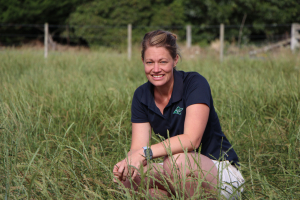Wilson told Rural News there are differing views on whether milk supply out of Europe will increase once quotas are lifted.
Given that EU’s milk consumption is relatively stagnant, he believes increased production from the bloc will end up in the global market to meet growing demand.
He says Fonterra‘s joint venture with Netherlands-based A-ware Food Group is an example of the co-op tapping into the changing EU dairy environment.
Fonterra and A-ware Food Group are developing a new cheese plant and dairy ingredients plant in Heerenveen in the north of the Netherlands. A-ware will operate a cheese plant and Fonterra will operate a dairy ingredients plant alongside it.
Cheese will be produced for A-ware’s customers in Europe and the whey and lactose produced will be processed into premium nutrition dairy ingredients for Fonterra’s global customer base. A-ware will be sourcing milk from Dutch farmers, who are expected to ramp up production when the milk quotas go. Wilson says this could add another billion litres of milk to Fonterra’s global pool.
Wilson expects global growth in milk production to be 0.5% higher than a year ago.
Global dairy demand is forecast to grow by 120 billion L by 2021, 40 billion L of that in freely traded markets – largely the emerging markets. New Zealand is expected to see 2% or 3 billion L growth during the same period.
Wilson says this highlights the importance of Fonterra’s strategy to support New Zealand milk by ensuring access to global milk pools so we can accommodate demand growth.
Current global demand for milk products is growing at just over 2% per annum. In China, demand is expected to grow 7% by 2020 – but milk supply will grow by only 4%.
China’s dairy industry is changing rapidly, with evidence this year of consolidation at the farming and manufacturing levels of the supply chain, says Wilson.
Forecasts predict a modest recovery in global milk production, with some early signs evident.
Key Southern Hemisphere exporting countries Argentina, New Zealand, and Uruguay are seeing small growth. Australian milk production remains down on last season. In the USA, with lower grain prices, milk supply is tipped to increase.

















